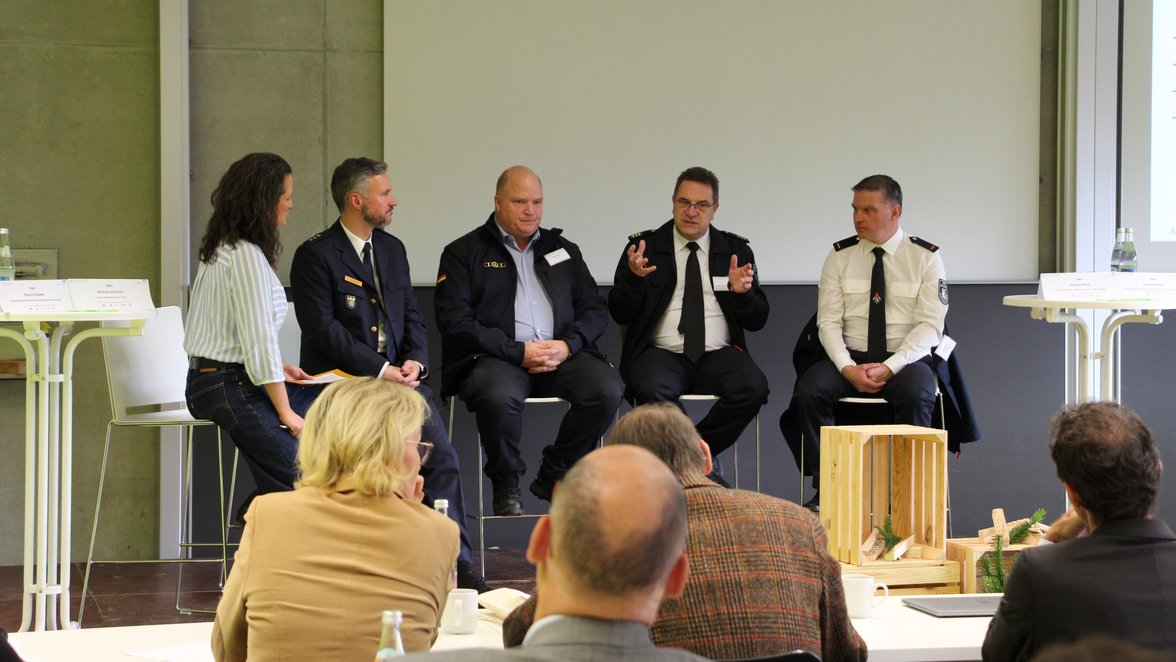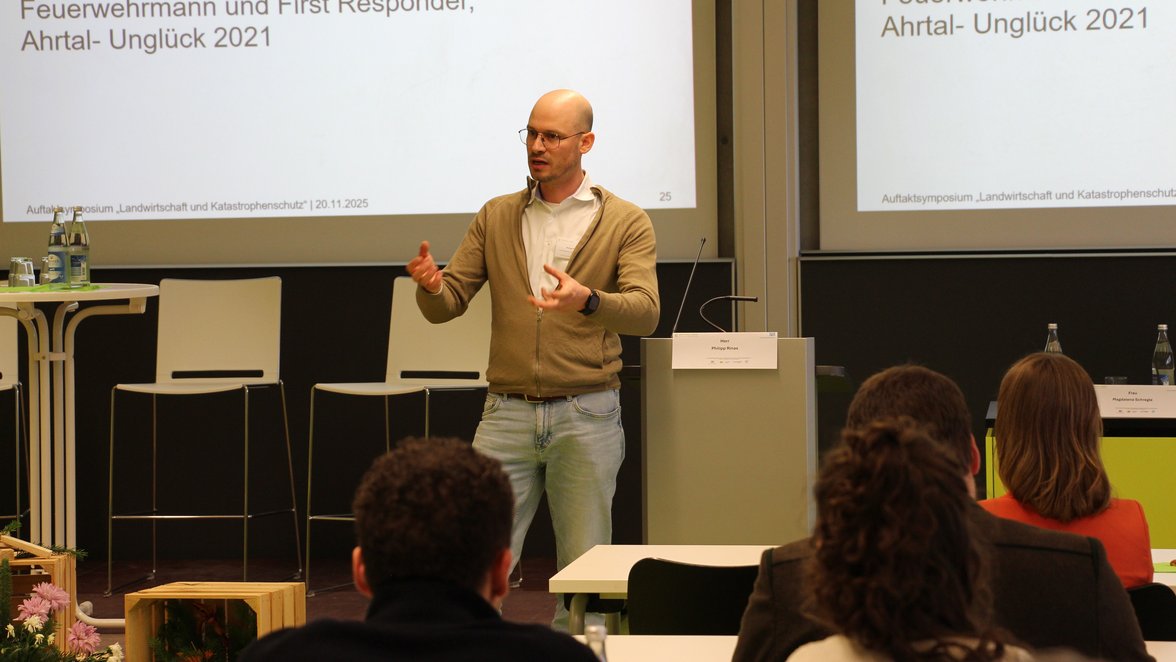Collaboration for emergency management
Research, Campus |
“The question of whether we will do it or not is no longer an issue,” says Christoph Bader from HSWT. Rather, it is a question of how and when. Together with Prof. Heinz Bernhardt from TUM, he is the project manager of LuKaS. At the kick-off symposium, the project managers presented LuKaS and further aspects of the project work were discussed. The aim of the project is to determine the potential of agriculture in disaster control. What resources do farms need to provide? What are the advantages of integrating farms into disaster control?
Agriculture as a service provider in disaster control
“You don't need to go looking for agriculture—it's already there,” says Andreas Müller from the Freising District Fire Department Association. Agricultural businesses have equipment, electricity, fuel, and land: resources that can save lives in the event of a disaster. Land can be flooded to relieve pressure on dikes, and fuel and electricity from the business can be used for emergency supplies.
Michael Wüst from THW Freising reports on the importance of equipment: during a flood a few years ago, the emergency services faced a problem; they were unable to transport sandbags quickly and in sufficient quantities to where they were needed. Farmers were able to deliver hundreds of sandbags within a few hours, thus preventing the flood from escalating further.
Agricultural businesses can also provide support in the event of a disaster in terms of communication. “Agricultural businesses have everything you need for crisis communication,” says Harald Huber from Smart Radio Net GmbH, an expert in crisis communication, “electricity, space, high roofs for installing antennas, and on top of that, they are strategically well distributed.”
Agricultural businesses not only offer valuable resources—equipment, electricity, fuel, space, communication security—but are also usually strategically located in and around communities.
"One alone cannot do it"

One thing runs through almost all of the contributions: cooperation in disaster control is key. Philipp Rinas reports on his work as a firefighter and first responder in the Ahr Valley during the flood disaster in 2021: “In the event of a disaster, everything is very dynamic. Not only is prioritization necessary, but also good networking and communication between the emergency services.”
Alfons Brandl was involved in developing a heavy rain risk management system. Here, too, the motto was: together we can achieve more. Four ministries worked together to develop effective measures for protection and alerting. This resulted in a digital twin of the region to identify vulnerable areas. In collaboration with residents, an early warning app for citizens was developed.
Cooperation is also needed in the feasibility study and research for the LuKaS project. Christoph Moning, Vice President for Research and Knowledge Transfer at HSWT, emphasizes the cooperation between TUM, HSWT, all project partners, and the participating agricultural businesses.
The project
Officially, the LuKaS project is running form July 2025 until the end of 2027. However, the work at the Campus in Weihenstephan has been going on for much longer already. Prof. Dr. Jörn Stumpenhausen, former professor at HSWT, says that work on the topic has been ongoing for over ten years.
The project will conclude with a disaster simulation. There is still a lot to do before then, and many questions need to be answered: How must a business be structured in order to provide support during a blackout? How can businesses and emergency services be networked? How can we make the systems secure and stable even in the event of a disaster? Over the coming years, Christoph Bader and Prof. Heinz Bernhardt will work with the partners involved to find answers to these questions.


